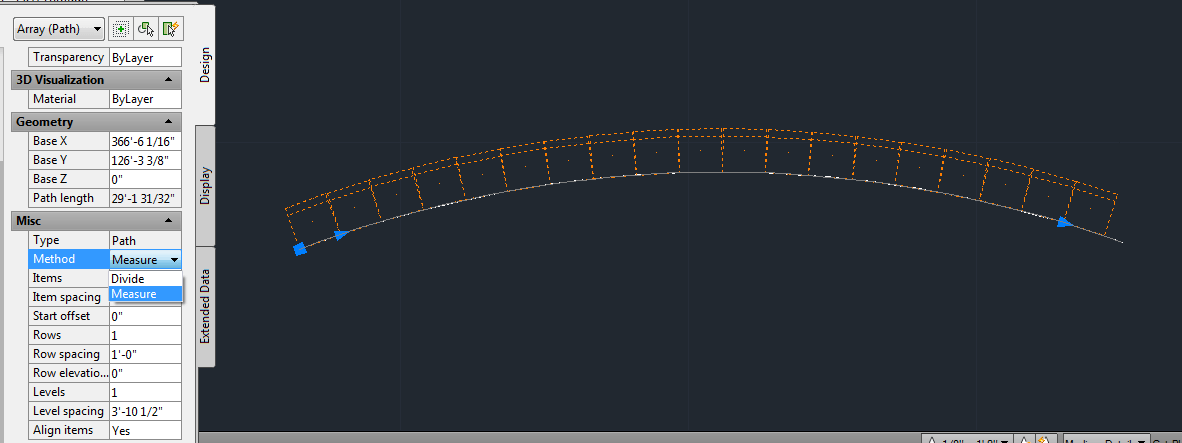One of the trickier tasks in architecture using AutoCAD has been working with seating arrangements in Auditoriums. The new ARRAYPATH command in AutoCAD 2012 offers an array of options (pun intended) to solve this issue. In the image below you can see a standard chair block (3D) and a path I drew with an Arc to indicate the path I would like it to take.


This next piece of information is where it gets really special… if I change the radius of the Arc the array will automatically adjust to match it! Because the blocks will copy and rotate to match the arc we find that seating arrangements have never been easier!
This same concept could apply to equally spacing Windows along the width of a wall or a space. If the space would change size (of course that never happens because the client never changes their mind *cough*) no problem… the array can be adjusted in seconds! Also this command will space objects along a 3D path so that we could equally space objects such as stair treads, balusters, or various other objects up ramps, slopped or spiraling paths, etc.
While it could be argued that using the MEASURE or DIVIDE commands could produce similar results, they were never nearly as user friendly or forgiving as the ARRAYPATH command. Try it now, you’ll use it often!

Leave A Comment